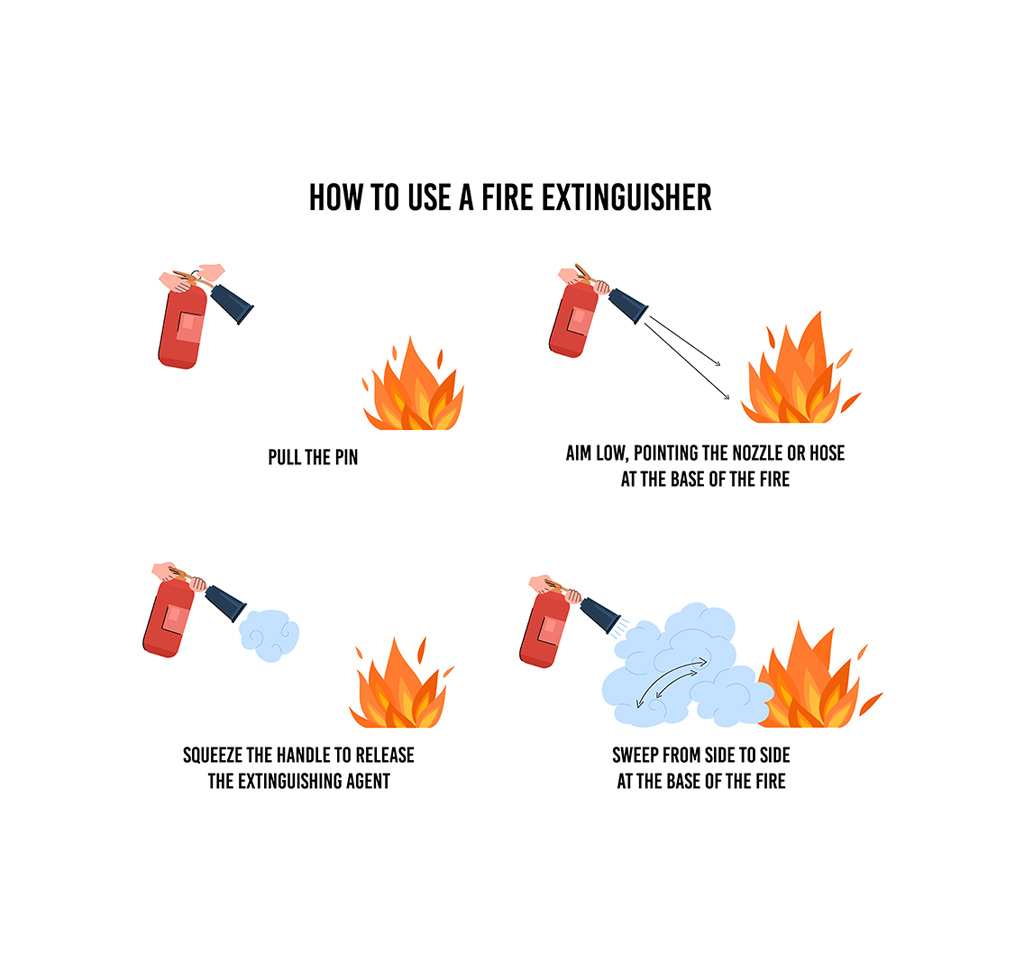This information is being provided for general informational purposes only. Meemic Insurance Company does not assume any liability in connection with providing this information.
According to a fire loss study done by the National Fire Protection Association, house fires accounted for 75% of all structural fires in the United States. There are about 400,000 residential property fires in the U.S. each year, and these residential fires account for more than 3,700 human fatalities each year. Even when all other natural disasters are combined, fires still typically claim more American lives per year.
Considering the cost, frequency and loss of life related to residential fires, it’s important for homeowners to have loss control measures in place. A fire extinguisher may seem like a simple item, but when properly selected, placed and maintained, a fire extinguisher can be a powerful tool to prevent widespread fire loss. The best thing is that a fire extinguisher is a relatively cheap investment, as prices start at around $20.
It’s important to become familiar with the different classes of fire extinguishers. There are five classes, with each class based on what type of fire the extinguisher is capable of extinguishing. The five extinguisher classes are marked with a class specific color, geometric symbol, and/or picture.
Because fires may often involve a combination of elements, most fire protection experts recommend a fire extinguisher with an ABC rating.
Class A Fire Extinguisher
Color - green
Geometric symbol - triangle
Picture - burning garbage can and woodpile
This class of fire extinguisher is intended to be used on ordinary solid combustibles. These types of fires might involve cloth, wood, rubber, paper or certain types of plastic.
Class B Fire Extinguisher
Color - red
Geometric symbol - square
Picture - container of fuel and burning puddle
This class of fire extinguisher is intended to be used on flammable liquids and gasses. These types of fires might involve lacquers, gasoline, alcohol, diesel oil, oil-based paints or flammable gas.
Class C Fire Extinguisher
Color - blue
Geometric symbol - circle
Picture - burning outlet and electric cord plug
This class of fire extinguisher is intended to be used on energized electrical equipment. It would be used for fires that involve an appliance, electrical wiring, circuit breaker or electrical outlet.
Class D Fire Extinguisher
Color - yellow
Geometric symbol - star or decagon
Picture - burning bearing and gear
This class of fire extinguisher is intended to be used on combustible metals. These fires might involve magnesium, potassium, sodium or titanium. It’s important to note that some Class D fire extinguishers will work on multiple metal types, but others are metal specific.
Class K Fire Extinguisher
Color - black
Geometric symbol - hexagon
Picture - burning pan
This class of fire extinguisher is intended to be used on combustible cooking fires. It can be used to put out fires from cooking oils and fats.
Remember the PASS Technique
P - Pull. Pull the locking pin before using the fire extinguisher.
A - Aim. Aim the fire extinguisher at the base of the fire. Not at the flames or smoke.
S - Squeeze. Squeeze the lever of the fire extinguisher to operate and discharge.
S - Sweep. Sweep the fire extinguisher back and forth at the base of the fire to extinguish.
A typical fire extinguisher contains about 10 seconds of extinguishing power or less if it has been used previously. Always read the instructions that come with the extinguisher beforehand and become familiarized with its parts. It is highly recommended by fire prevention experts that you seek hands-on training before operating a fire extinguisher. Most local fire departments offer this service.
Fire Extinguisher Tips
- Fire extinguishers are important fire protection tools. However, it’s vital to know the fire type and extinguisher class before attempting usage. Using the wrong extinguisher on the wrong fire can make the fire worse and cause life threatening injury.
- It’s extremely important for all members of the household, babysitters, housekeepers and any other potential user to know how to safely and correctly use the fire extinguisher. Since most will not be using an extinguisher on a regular basis, it’s also important to periodically review the instructions.
- Fire protection experts recommend that a medium-sized fire extinguisher be placed in the kitchen and garage. A fire extinguisher should also be placed on each additional floor of the home.
- All fire extinguishers should be annually inspected and maintained by a professional fire equipment supplier. If not properly maintained, a fire extinguisher might not discharge when needed. There’s also the risk of it rupturing when pressurized, which can result in serious injury.
- Having fire extinguishers in the home may help reduce the cost of home insurance. Contact your agent to find out about a discount for protective devices.
- Keep in mind that fire extinguishers are vital protection against fire loss, but they must be properly selected, placed and maintained.
